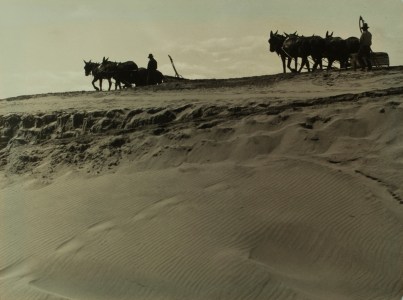Applications for the Getty Multicultural Undergraduate Summer Internships at the Japanese American National Museum are due on April 27! If you are considering applying, read on for one former intern’s story of how the experience changed her life.
A communications major, an art major, and an English major walk into a bar…

What sounds like the beginning of a bad joke was my college reality. Living in a house of Humanities and Social Science majors, my roommates and I spent four years worrying not just about term papers and printer cards, but also about student loans and postgraduate careers. As optimistic freshmen, we joked that upon graduation we would all live in cardboard box mansions, as that would be all we could afford. But as graduation loomed nearer, we said it more frequently through gritted teeth.
Then, in my junior year I learned about the Getty Multicultural Undergraduate Internship, available at the Japanese American National Museum as well as numerous other museums throughout Southern California. It sounded promising on all counts. I was attending UC Santa Barbara, and returning to Los Angeles for a cool internship sounded much better than the alternative of slopping meals at my student job in the campus dining commons. I also liked the idea of putting “Getty Intern” in big, bold letters on a résumé that boasted little more than my previously mentioned cafeteria duties. And perhaps most important of all, it was PAID!
After eagerly filling out the application, getting my letters of recommendation, and sacrificing a lamb or two, I learned that I was chosen to be JANM’s 2011 Media Arts Intern. Although excited, I was also a little wary and hoped I wouldn’t be a glorified coffee runner, coming home with fingers bloodied by paper cuts and blackened from fixing toner cartridge jams. But I figured at the very least, I’d have ten weeks in Little Tokyo surrounded by all the mochi ice cream I could get my hands on.
I can still remember my first day, five years ago. I was immediately introduced to the two other Getty interns, who were assigned to the curatorial and production departments. We all squished together on a pale leather sofa in a bright room called the Takei Lounge, nervously awaiting further instructions and making awkward small talk. Then, after a quick orientation, we dove into our jobs as museum interns.

and Krista Chavez. Photo courtesy of discovernikkei.org.
As cliché as it sounds, the ten weeks in Media Arts flew by as I learned many new skills. I spent Saturdays filming public programs, meeting speakers that included baseball players and sports executives, hearing poetry readings, and learning the history of kamaboko (fish cake)—with samples! I got a VIP invitation to the Japanese Consul General’s home. I was suddenly able to grab a camera, shoot some videotape, and use Final Cut Pro to edit my own film. I learned basic Photoshop, and could create a real DVD with all the bells and whistles. Yet, as résumé-ready as these skills were, it was the experience and the interactions with people at the museum that were most life-changing.
I met staff and volunteers who had passion for the same things that I had passion for—brilliant people who cared about Japanese American history and culture, who understood the beauty of books and the knowledge they held. I met academics whose texts I had studied. I met people who could (and had) designed exhibitions from the ground up. One of my fellow Getty interns learned about the mysteries that could be unearthed in a pile of artifacts with a pair of white gloves, while the other experimented with wall vinyls and paints, learning how to make research come to life.

how to make kamaboko (Japanese fish cake) by hand.
In those ten quick weeks, I gained a new skill set, a few extra pounds from all the mochi ice cream and snacks, and most importantly, the knowledge that there is a brick-and-mortar set of walls that houses (and pays!) people who care about the same things I care about. When I left, I still didn’t quite know what I wanted to do with my postgraduate life, but I had a much stronger idea of where I might like to be.
In 2014, when I got a call from my amazing Media Arts supervisor about a temporary position in the museum store, I jumped at the opportunity to get my foot back in the door. Since then, I’ve managed to turn that temp gig into a full-time job, taking on a combination of Development, JANM Store, and Visitor Services duties. I’ve connected and reconnected with dozens of wonderful people, met the great George Takei (friend of the museum and the namesake of the lounge where I met my fellow interns back on that first day), and found a real home in this little JANM family.
For details on the available internships and how to apply, visit our Jobs page.
![Anna May Wong. Photo: Carl Van Vechten [Public domain], via Wikimedia Commons.](https://i0.wp.com/blog.janm.org/wp-content/uploads/2016/03/Anna_May_Wong_1.jpg?resize=235%2C300&ssl=1)





























